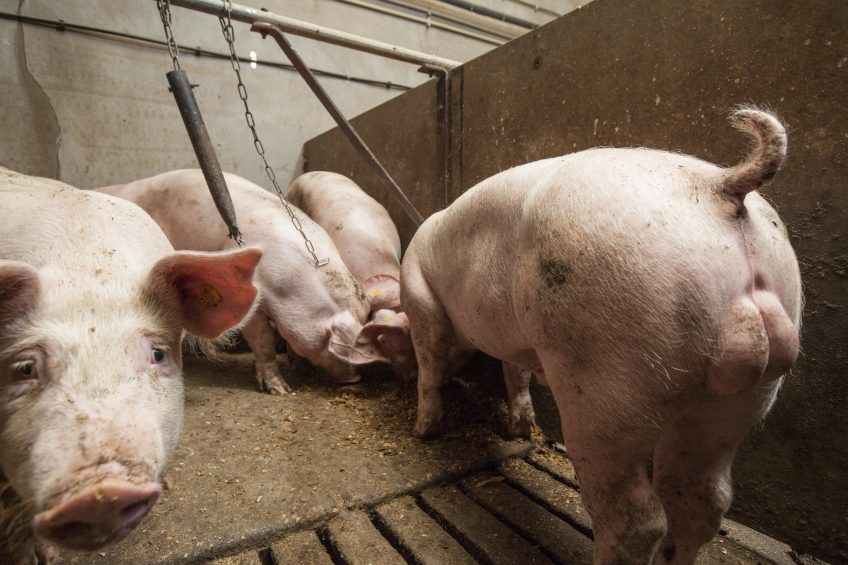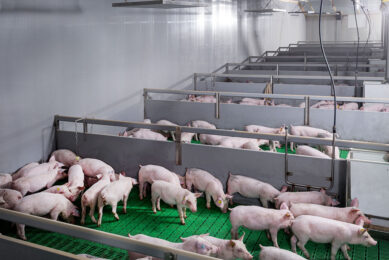Boar taint related to stressful situations for finishers

It is possible to reduce the risk for boar taint by taking appropriate measures in the pig house, during transport and in the lairage. Reducing stress is key.
In case entires end up at the slaughterline in a situation without a lot of stress, the number of tainted carcasses will also be less. That, in short, was the outcome of a research called Taintless, carried out by the Flemish Research Institute for Agriculture, Fisheries and Food (ILVO) in cooperation with 2 other universities.
How often does boar taint occur?
For 23 farms, spread out over 2 finishing rounds, the research team looked at how often boar taint occurred. On average, this happens at 3-5% of all entires. Nevertheless, there is a large difference between the farms – and the moment of slaughter does make a difference as well.
The researchers showed that the level of skin lesions on the carcass, as well as the lean meat percentage, the waiting time in the lairage and the presence of gilts in the same section are all directly related to boar taint.
When do boars yield tainted carcasses?
Boar carcasses with more skin lesions and more fat, finished in the direct vicinity of gilts and that spent shorter times in the lairage were proven to yield tainted carcasses more often. They were tested by 3 experienced ‘sniffers’ at the slaughterline. Entires with a higher meat percentage, however, were shown not to yield many tainted carcasses. It is unknown why exactly.
The researchers pointed to stress reduction in order to explain the relationship with a more intact carcass as well as the waiting time in the lairage. Preventing stress during finishing, transport as well as inside the slaughterhouse reduces the risk of boar taint. Therefore, the research team discouraged keeping gilts and entire boars together. Presence of gilts was observed to stimulate the boars’ sexual development.
Also read: A novel solution to prevent boar taint using the right nutrition has yielded positive results in 5 trials. Especially skatole levels appear to drop substantially using this strategy. read more…
Financially it is more rewarding to keep entires
The research team repeated once more that financially, it is interesting to keep entires rather than castrates. Boars need less feed and grow more uniformly. One of the key challenges for growing boars, however, is the continued risk for boar taint in a few pigs. There are a series of effective strategies to reduce the risk of boar taint. Nevertheless, slaughterline detection remains necessary.
The Flemish research will continue to be held for another year. Further studies will be carried out to investigate the effect of time in the lairage as well as keeping males and females separated during finishing. In addition, nutrition is studied to reduce the risk of boar taint.











